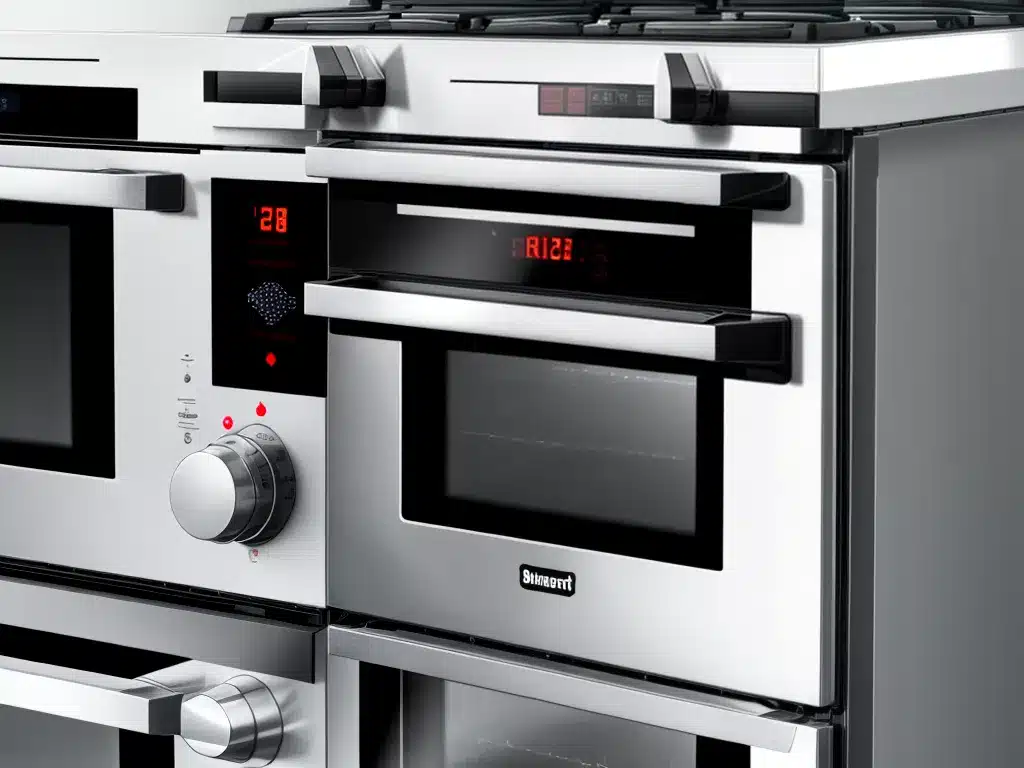
Introduction
Cooking with smart ovens can be a game changer for home chefs who want more precision and control when preparing meals. Unlike traditional ovens, smart ovens use advanced technology like sensors and WiFi connectivity to offer features that make it easier to achieve your desired results every time. In this in-depth guide, I’ll explain what makes smart ovens special, their key features and benefits, and provide tips for choosing the right model for your needs.
How Smart Ovens Are Different from Conventional Ovens
While conventional ovens rely solely on temperature settings, smart ovens use a range of innovative features to take the guesswork out of cooking. Here’s an overview of what makes them unique:
-
Built-in probes and sensors – Smart ovens have probes and sensors that monitor the internal temperature of food in real-time. This lets you easily track doneness and prevent over or undercooking.
-
Precision temperature control – Instead of just setting a static temperature, smart ovens allow you to program customized heating cycles. You can set different target temperatures for multiple stages of the cooking process.
-
WiFi connectivity – Many smart ovens connect to your home WiFi network and can be controlled from a smartphone app. This allows remote monitoring and control.
-
Preprogrammed cooking settings – Smart ovens come loaded with preset cooking modes for different foods that have been tested to optimize results. Just select the food type and it will configure the ideal time and temperature automatically.
Key Features and Benefits
Here are some of the most useful features you get with smart ovens:
Real-Time Food Temperature Monitoring
Smart ovens use internal food probes and sensors to continuously monitor the internal temperature of meat, poultry, fish, and more as it cooks. You simply insert the probe into the thickest part of the food. The oven displays the temperature on the control panel and alerts you when your set doneness temperature is reached. This takes the uncertainty out of determining if your food is properly cooked.
Multi-Stage Cooking Programs
With precision temperature control, smart ovens allow you to set up custom multi-stage cooking programs with varying target temperatures across the duration of the cooking cycle.
For example, you may want to initially sear meat at a high temp and then slow roast it at a lower temp. Or, bake at higher heat to start for oven spring and finish at lower temp for even browning. This level of control is not possible in a standard oven with a single set temperature.
Remote Monitoring and Control
Many smart ovens have WiFi connectivity that allows you to connect them to your home network and control cooking from a smartphone app. This means you can preheat, start, stop, and monitor cooking remotely. You’ll get alerts when cooking stages are completed or if any issues arise even when you’re not physically in the kitchen.
Preprogrammed Cooking Modes
Smart ovens come with preloaded cooking modes optimized for various foods like meats, poultry, fish, pizza, cookies, vegetables, breads, and more. Instead of manually configuring time and temp, you can just select the food type and desired doneness level (rare, medium, etc.) and the oven will automatically dial in the recommended settings. This takes the complexity out of programing the oven.
Tips for Choosing a Smart Oven
If you’re ready to upgrade your conventional oven to a smart model, keep the following tips in mind:
-
Consider the capacity – Smart ovens come in a range of cavity sizes from small/medium units to larger double oven configurations. Make sure to get one big enough for your household needs.
-
Look for probing options – Models with multiple probe ports allow you to monitor multiple items simultaneously. This is useful for complex meals with meat and side dishes.
-
Check connectivity features – Opt for WiFi-enabled models if you want to control cooking from your smartphone. Look for compatibility with voice assistants like Alexa or Google Assistant for hands-free control.
-
Prioritize ease of use – The best smart ovens have intuitive controls and cooking presets. Models with full touchscreen interfaces offer the most user-friendly experience.
-
Look for additional functionality – Some smart ovens also boast extra features like air frying, dehydrating, bread proofing, and slow cooking for added versatility.
Putting It All Together
With their innovative features like precise temperature control, built-in probes, WiFi connectivity, and preset cooking modes, smart ovens take the uncertainty and effort out of everyday cooking. By monitoring food temperature in real-time, you can achieve perfectly cooked results every time whether you are baking, roasting, or broiling. Look for a spacious, feature-packed model that will make cooking foolproof and enjoyable. With a smart oven, you can expand your repertoire and cook restaurant-quality meals with total confidence right from your home kitchen.












